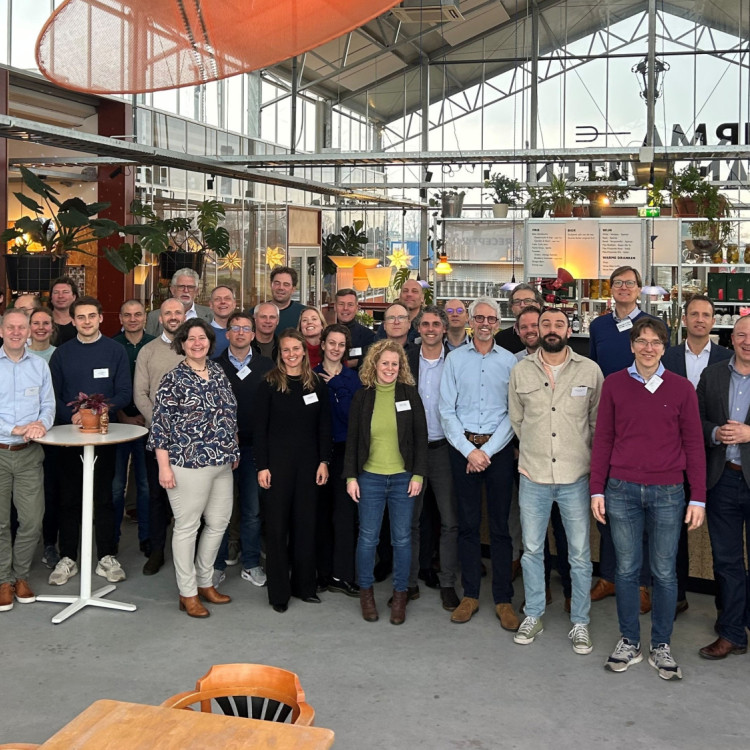FOR ENGLISH SCROLL DOWN
Van CO2-neutrale gebouwen naar een CO2-neutraal bouwproces en materiaalgebruik. Deze opgave vergt een Whole Life Carbon aanpak. Om de eerste stap naar Whole Life Carbon te zetten publiceert DGBC het rekenprotocol voor materiaalgebonden CO2: Paris Proof Materiaalgebonden Emissies. Net als bij het operationele energiegebruik wordt in het protocol een grenswaarde voor het Paris Proof niveau aangegeven.
CO2-budgetbenadering
In het protocol is gekozen voor een budgetbenadering: de hoeveelheid CO2 die de bouwsector nog mag uitstoten. Materiaalgebonden emissies zijn verantwoordelijk voor 11% van de CO2-uitstoot in Nederland. Binnen het scenario voor 1.5 °C graden opwarming hebben we wereldwijd nog een emissiebudget van 400 Gt CO2-equivalent. Als we het budget toewijzen op basis van inwonersaantal, komen we voor Nederland uit op 909 Mt CO2. Afgaand op het aandeel van de materiaalgebonden emissies, laat dit ruimte voor 100 Mt embodied CO2-budget voor de Nederlandse bouwopgave (inclusief GWW). Zonder reductie is het budget binnen 5 tot 8 jaar op, dus nog voor 2030.
In de Position Paper ‘Whole Life Carbon’ lees je meer over de noodzaak en mogelijkheden van deze budgetbenadering voor de bouw.
Grenswaarden materiaalgebonden emissies
NIBE heeft in opdracht van DGBC onderzoek gedaan naar de CO2-impact van het bouwproces en materiaalgebruik. Het rekenprotocol Paris Proof Materiaalgebonden stelt partijen uit de keten in staat om te rekenen met de CO2-impact van hun nieuwbouw en renovatieprojecten aan de hand van hun MPG berekeningen. Om aan Paris Proof materiaalgebonden CO2-eq. te voldoen dient het bouwwerk een embodied CO2-eq. waarde per m2 BVO te hebben die lager of gelijk is aan de grenswaarden voor nieuwbouw of renovatie zoals aangegeven in het protocol voor het desbetreffende jaar.
Om de berekening te kunnen uitvoeren dient gebruik gemaakt te worden van erkende MPG rekeninstrumenten. Informatie over de MPG en de rekeninstrumenten is te vinden op www.milieudatabase.nl
Heb je projecten al doorgerekend met het protocol? we zijn benieuwd naar jouw resultaten. Je kan het excel invullen en toesturen naar Laetitia.
Naar een Whole Life Carbon aanpak
In het achtergrondrapport wordt de Paris Proof embodied CO2-eq. methode beschreven. Hierin staat een voorstel voor streefwaarden voor een maximale CO2 impact voor nieuwbouw en renovatie voor verschillende functies per m2 bouwwerk. Ook enkele scenario’s zijn doorgerekend om met de gehele bouwkolom binnen deze grenswaarden te blijven.
Lees de veelgestelde vragen.
BuildingLife
De ontwikkeling van deze aanpak is onderdeel van het Europese BuildingLife programma. Wil je een bijdrage leveren aan BuildingLife? Meld je dan aan als Ambassadeur, of lees hier meer over #BuildingLife.

Paris Proof Embodied Carbon Calculation
The construction sector is facing a major sustainability challenge. This task goes further than just reducing CO2 in the use stage. The construction process and the use of materials also result in a CO2 impact. This will require a new perspective on how the construction industry is becoming more sustainable. We call this the Whole Life Carbon approach. This approach is part of the European #BuildingLife program.
NIBE was commissioned by the Dutch Green Building Council (DGBC) to research how the CO2 impact of the building process and material use for both new construction and renovation could be included in the Whole Life Carbon approach. We also call the CO2 impact of the construction process and material use the Embodied impact. At the heart of our research has been the question of how the impact of the Dutch construction sector can be situated within the Paris Agreement. We therefore call our study ‘Paris Proof’ Embodied.
Calculation protocol
This document defines how embodied CO2-eq. can be calculated to demonstrate compliance with the Paris Proof limit values. To perform the calculation, recognized MPG calculation tools should be used. Information about the MPG and the calculation tools can be found at www.milieudatabase.nl.
Download the Calculation protocol
Background report
The background report describes the approach taken, as well as the results to date, which ultimately led to a proposal for target values for maximum climate change impact for new construction and renovation for different functions per m2 of building.
Download the Background report


